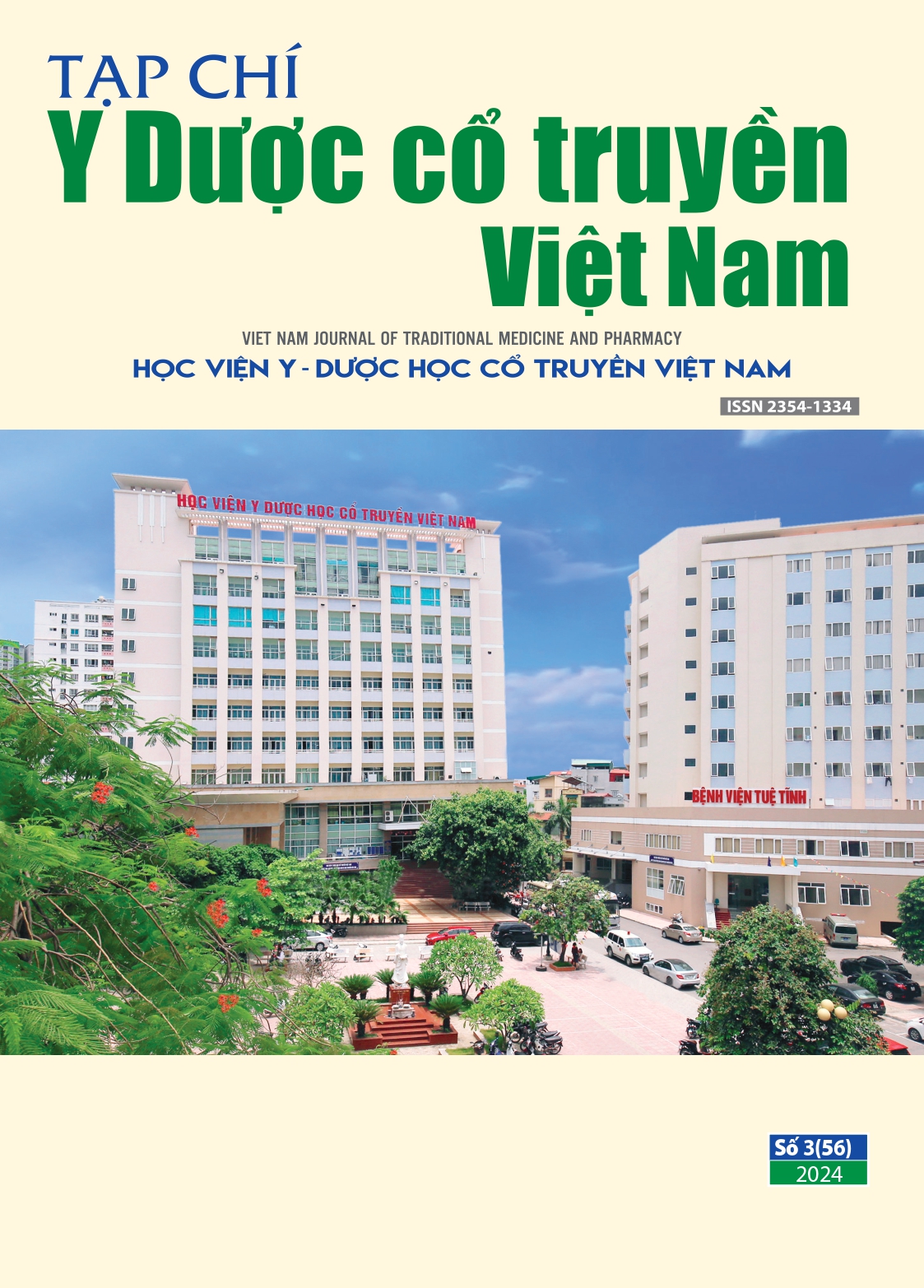Researching the heatstroke prevention effect of Cao kho thanh nhiet on experiment
Main Article Content
Abstract
Objectives: To evaluate the effect of increasing the tolerance to heat burden of Cao kho thanh nhiet on an experimental model.
Subjects and methods: Studying the effect of increasing heat burden tolerance of Cao kho thanh nhiet in rats with oral administration of heat burden model of Chi-Chyuan Liu.
Results: The variation of blood pressure and pulse rate of rats with 2 groups of Cao kho thanh nhiet oral intake tended to decrease than the control group. In addition, the survival time under the continuously exposure to heat burden of the two batches that were given Cao kho thanh nhiet were longer than that of the control group (p<0.01).
Conclusions: Cao kho thanh nhiet has been effective in preventing heatstroke in experimental animals.
Article Details
Keywords
Cao kho thanh nhiet, heatstroke.
References
2. Christina Simpson, Alan Abelsohn. Heat – induced illness, 2012.
3. Liu, C. C., Shih, M. F., Wen, Y. S., Lai, Y. H., & Yang, T. H. Dexamethasone improves heat stroke-induced multiorgan dysfunction and damage in rats. International journal of molecular sciences, 2014, 15(11), pp.21299-21313.
4.Yang T.-H., Ho W.-Y., Shih M.-F. et al. Effects of combination treatment with dexamethasone and mannitol on neuronal damage and survival in experimental heat stroke. Biol Pharm Bull, 2010, 33(9), pp.1522–1528.
5. Trần Quốc Bảo. Lý luận cơ bản y học cổ truyền, Nhà xuất bản Y học, 2017, tr.144-145.
6. Ondruska, L., J. Rafay, A.B. Okab, M.A. Ayoub and A.A. AlHaidary et al. Influence of elevated ambient temperature upon some physiological measurements of New Zealand White rabbits. Vet.
Med, 2011, 4, pp.180-186.
7. Askar, A.A. and E.I. Ismail. Impact of heat stress exposure on some reproductive and physiological traits of rabbit does. Egypt. J.Anim. Prod, 2012, 49, pp.151-159.
8. Liu C.-C., Shih M.-F., Wen Y.-S. et al. Dexamethasone improves heat stroke-induced multiorgan dysfunction and damage in rats. Int J Mol Sci, 2014, 15(11), pp.21299-21313.

